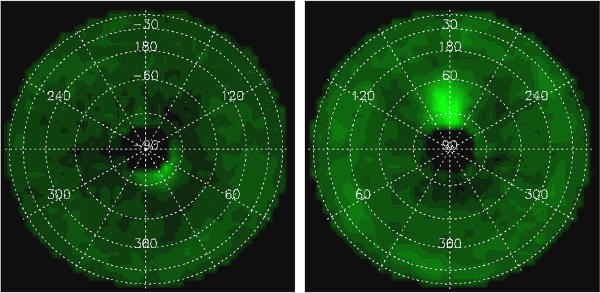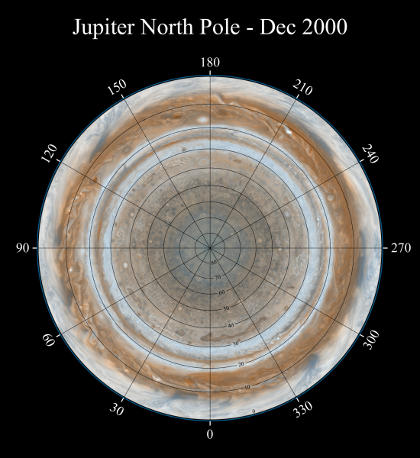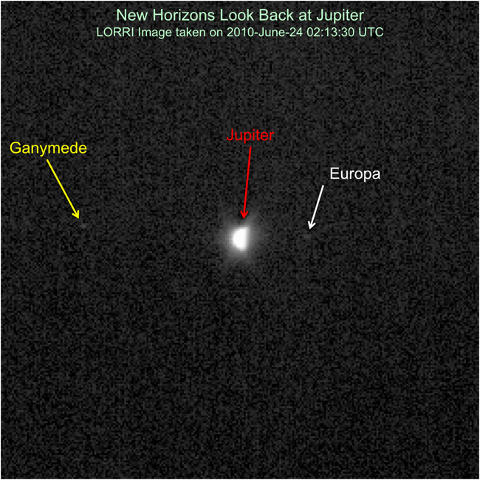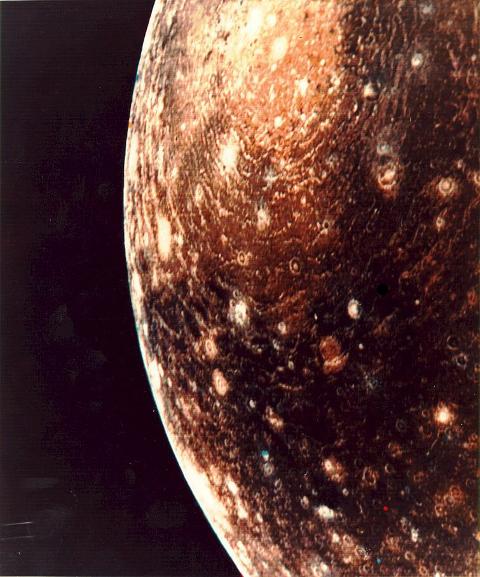
The joint NASA/ESA Cassini-Huygens mission made some interesting discoveries on Jupiter, on the way to its final destination which was Saturn. This January 2001 composite infrared picture shows Jupiter’s south pole (left) and north pole (right). The bright green spots are the warmer areas, believed to be organic matter, specifically acetylene (ethyne; C2H2). This research allowed scientists to better understand the chemical interactions between sunlight and molecules in Jupiter’s stratosphere.


